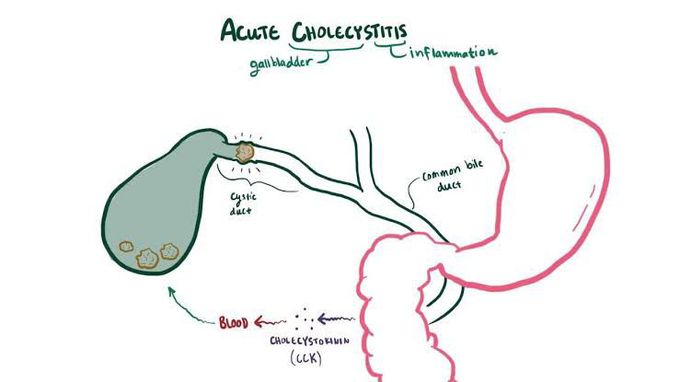


Treatment of cholecystitis
Mayo Clinic does not endorse companies or products. Advertising revenue supports our not-for-profit mission. Advertising & Sponsorship PolicyOpportunitiesAd Choices More Information Abdominal ultrasound CT scan HIDA scan Treatment ERCP procedure Endoscopic retrograde cholangiopancreatography Enlarge image Laparoscopic cholecystectomy Laparoscopic cholecystectomy Enlarge image Treatment for cholecystitis usually involves a hospital stay to control the inflammation in your gallbladder. Sometimes, surgery is needed. At the hospital, your health care provider will work to control your symptoms. Treatments may include: Fasting. You may not be allowed to eat or drink at first in order to take stress off your inflamed gallbladder. Fluids through a vein in your arm. This treatment helps prevent dehydration. Antibiotics to fight infection. If your gallbladder is infected, your provider likely will recommend antibiotics. Pain medications. These can help control pain until the inflammation in your gallbladder is relieved. Procedure to remove stones. You may have a procedure called an endoscopic retrograde cholangiopancreatography (ERCP). During this procedure that uses dye to highlight the bile ducts, instruments can be used to remove stones blocking the bile ducts or cystic duct. Gallbladder drainage. In some cases, such as when surgery to remove the gallbladder is not an option, gallbladder drainage (cholecystostomy) may be done to remove infection. Drainage is done through the skin on the abdomen (percutaneous) or by passing a scope through the mouth (endoscopic). Your symptoms are likely to decrease in 2 to 3 days. However, gallbladder inflammation often returns. Most people with cholecystitis eventually need surgery to remove the gallbladder. Gallbladder removal surgery The procedure to remove the gallbladder is called a cholecystectomy. Usually, this is a minimally invasive procedure, involving a few tiny cuts (incisions) in your abdomen (laparoscopic cholecystectomy). An open procedure, in which a long incision is made in your abdomen, is rarely required. The timing of surgery depends on the severity of your symptoms and your overall risk of problems during and after surgery. If you're at low surgical risk, surgery may be performed during your hospital stay. Once your gallbladder is removed, bile flows directly from your liver into your small intestine, rather than being stored in your gallbladder. Even without your gallbladder you can still digest food.

